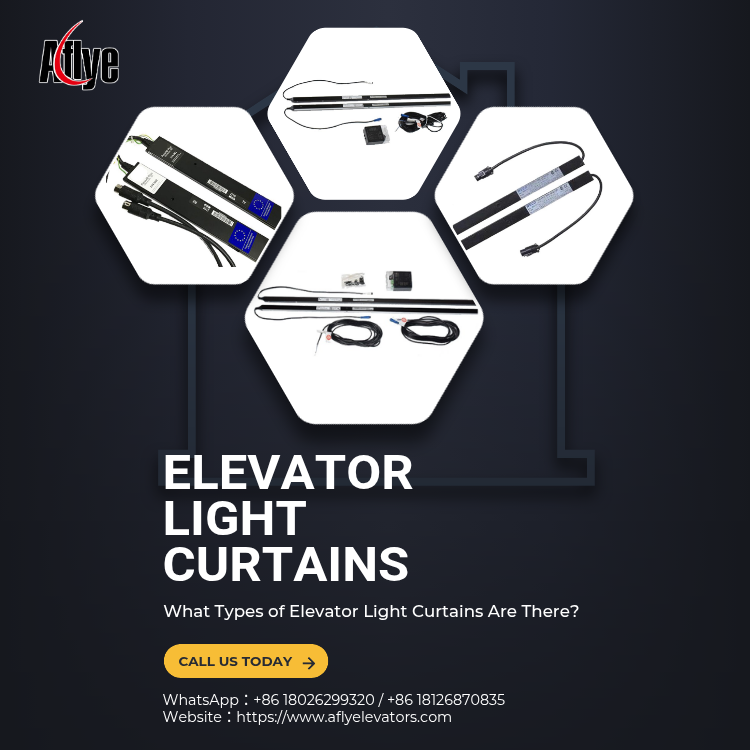What Types of Elevator Light Curtains Are There?
One of the most common safety risk areas during elevator operation is the landing door. To prevent passengers from being pinched while entering or exiting the elevator car, modern elevators are widely equipped with an Elevator Light Curtain as a door safety protection device. So, what types of elevator light curtains are there, and which environments are they suitable for? Let’s take a closer look.

1. Classification by Number of Light Beams
The number of beams determines the detection density and safety performance:
Standard Light Curtain (24–32 beams)
Suitable for residential elevators and low-rise office buildings, offering basic safety at an economical cost.
Medium-Density Light Curtain (40–64 beams)
Higher detection sensitivity, capable of detecting small objects such as children, pets, and luggage, ideal for commercial elevators.
High-Density Light Curtain (100–194 beams)
Provides full-area protection and faster response speed, widely used in hospital elevators, barrier-free elevators, and freight elevators with high safety requirements.
2. Classification by Installation Structure
Common elevator light curtains can be categorized by their installation design:
Through-Beam Type
The transmitter and receiver are installed on both sides of the elevator door. Detection is achieved by infrared beams across the entrance. This is the most widely used type.
Reflective Type
The transmitter and receiver are integrated on the same side, and a reflector panel returns the signal. Suitable for elevators with limited installation space.
3. Classification by Output Signal Type
Elevator light curtains must match the elevator control system, depending on the signal interface:
Relay Output Type
Highly compatible with older elevator control systems, commonly used in modernization projects.
NPN/PNP Transistor Output Type
Offers faster response time, suitable for modern elevator door operator systems and intelligent elevator control systems.
4. Classification by Application Environment
According to environmental requirements, elevator light curtains can also be classified as:
Standard Type: For normal indoor environments
Weather-Resistant Type: Suitable for humid or temperature-variable environments
Anti-Interference Type: Performs better in industrial sites or areas with strong electromagnetic interference
5. Importance of Elevator Light Curtains
Regardless of type, the main function of an elevator light curtain is to use infrared safety detection to prevent accidents caused by door closure, such as people or objects being trapped. It enhances elevator safety and meets international elevator safety standards, making it an essential component of the elevator door system.
Where to Purchase Reliable Elevator Light Curtains?
If you are looking for high-quality elevator light curtains or need to replace old optical safety devices, it is recommended to choose a professional elevator parts supplier.
A-FLY specializes in supplying elevator and escalator safety components. Our elevator light curtain product range includes:
Economic light curtains for residential elevators
High-density light curtains for commercial use
Compatible light curtains for modernization projects
Compatible with door systems of major elevator brands.
A-FLY offers global shipping, technical support, and bulk order discounts, making us a trusted partner for elevator maintenance companies and engineering contractors.

